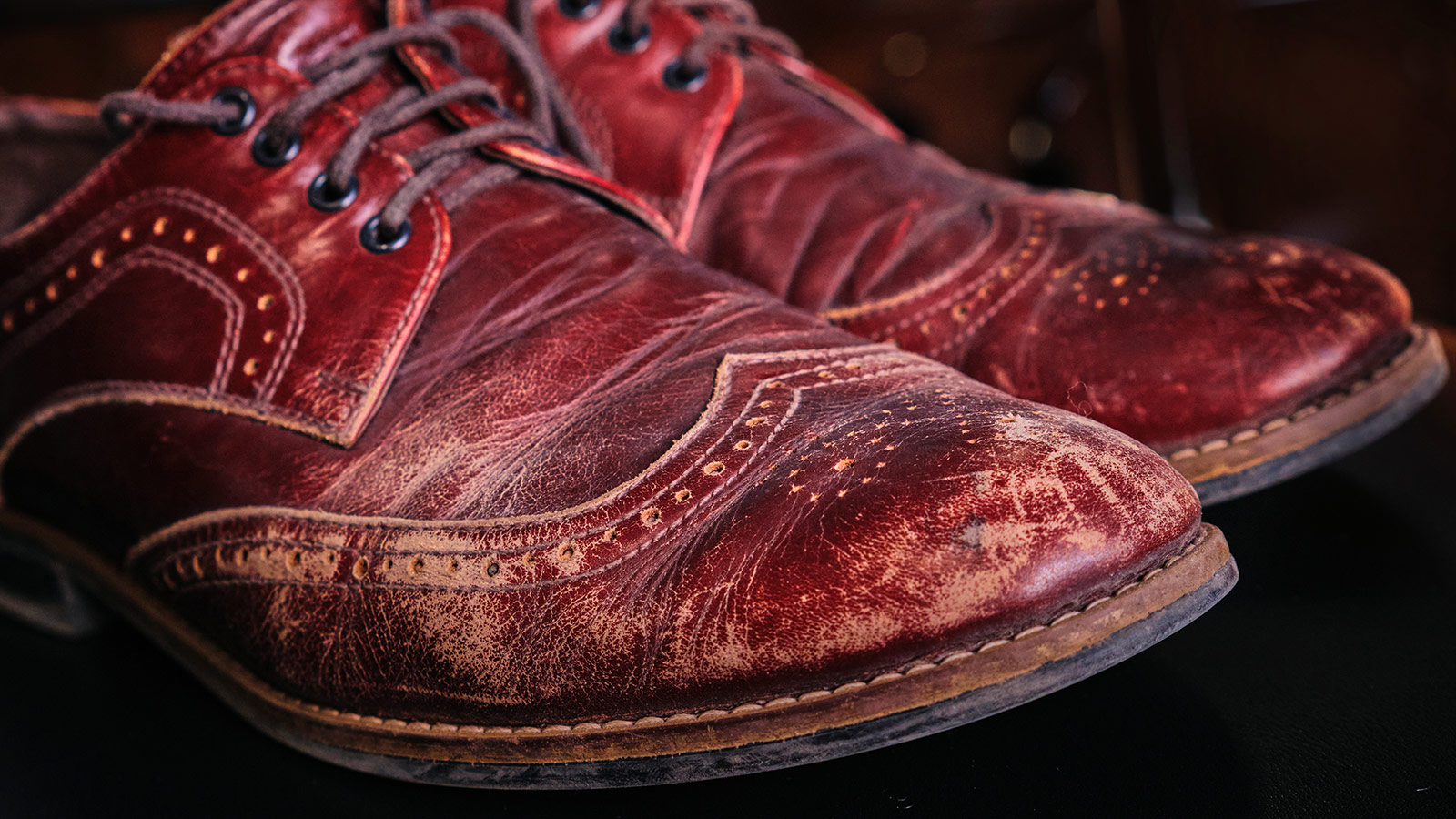Home>How-to Guides>For Women>How To Get Rid Of A Thong Rash


For Women
How To Get Rid Of A Thong Rash
Modified: July 30, 2023
Looking for effective ways to alleviate thong rash? Discover practical tips and remedies specifically designed for women to get rid of this uncomfortable condition.
(Many of the links in this article redirect to a specific reviewed product. Your purchase of these products through affiliate links helps to generate commission for Under-tec.com, at no extra cost. Learn more)
Table of Contents
Introduction
Welcome to our comprehensive guide on how to get rid of a thong rash. Thong rash, as many of you may know, is a common issue faced by women who wear thong underwear. It can cause discomfort, irritation, and even pain, making it essential to find effective solutions to alleviate these symptoms.
If you’re currently experiencing a thong rash or want to prevent one from occurring in the future, you’ve come to the right place. In this article, we’ll dive into the causes of thong rash, share preventive tips, and explore various home remedies and over-the-counter treatments to provide you with all the information you need to address this bothersome condition.
We understand that thong rash can be a sensitive topic, but it’s important to address it openly and honestly. Our aim is to empower and educate women, helping them to feel comfortable and confident in their own skin.
Thong rash occurs when the skin in the area where the thong rests becomes irritated and inflamed. This can be caused by a variety of factors, including friction, moisture, allergies, and skin infections. Fortunately, there are ways to both prevent and treat thong rash, allowing you to enjoy the freedom and comfort of wearing thongs without discomfort.
Throughout this guide, we’ll provide practical advice and explore different remedies that have been proven effective in managing and eliminating thong rash. From simple preventive measures to soothing home remedies and over-the-counter treatments, we’ll cover a wide range of options to cater to your needs and preferences.
It’s important to note that while the solutions we present are generally safe and effective, individual experiences may vary. If you have chronic or severe symptoms, it’s always advisable to consult with a healthcare professional for personalized advice and treatment recommendations.
So, without further ado, let’s delve into the world of thong rash and discover how you can overcome this pesky problem and continue to embrace your favorite style of underwear with confidence.
Understanding Thong Rash
Before we explore how to get rid of a thong rash, it’s important to have a clear understanding of what it is and why it occurs. Thong rash, also known as intertrigo, is a common skin condition that often affects the area where the thong straps come into contact with the skin. This friction, combined with other factors, can lead to irritation, redness, itchiness, and even the formation of blisters or sores.
The primary cause of thong rash is friction. Thongs, by their very nature, tend to be more snug and fitted compared to other types of underwear. This tightness combined with constant movement can cause rubbing and chafing against the skin, particularly in sensitive areas like the groin and buttocks.
In addition to friction, moisture can exacerbate the problem. Sweat, heat, and humidity can create a damp environment, promoting the growth of bacteria and fungi. These microorganisms can further irritate the skin, leading to a rash and discomfort.
Furthermore, allergies can play a role in the development of thong rash. Some individuals may have allergic reactions to certain fabrics or materials used in thong underwear, such as latex or synthetic fibers. These allergies can result in skin irritation and rash formation.
It’s also worth noting that poor hygiene and improper care can contribute to thong rash. Failing to clean the underwear regularly or not allowing it to dry fully before wearing it again can create an environment conducive to bacterial and fungal growth, increasing the risk of skin irritation.
It’s essential to understand that everyone’s skin is unique, and individual susceptibility to thong rash may vary. Some individuals may be more prone to developing rashes due to factors such as sensitive skin, pre-existing skin conditions, or hormonal changes.
Now that we have a better understanding of what causes thong rash, let’s move on to the next section, where we will explore preventive tips to help you avoid the discomfort and irritation associated with this condition.
Causes of Thong Rash
Thong rash can be attributed to several factors, which we will explore in this section. It’s important to identify the underlying causes to effectively prevent and treat this condition. Here are some common causes of thong rash:
- Friction: The primary cause of thong rash is the constant rubbing and friction between the thong straps and the skin. This can lead to irritation, redness, and chafing in the delicate areas where the thong rests.
- Moisture: Excessive moisture in the groin area can contribute to the development of thong rash. Sweat, humidity, and inadequate ventilation can create a warm and moist environment, ideal for bacterial and fungal growth.
- Allergies: Some individuals may be allergic to certain fabrics or materials used in thong underwear, such as latex or synthetic fibers. These allergies can result in skin inflammation, itching, and rash formation in the affected area.
- Poor Hygiene: Failure to maintain proper hygiene practices can increase the risk of thong rash. Not changing underwear regularly or wearing damp undergarments can create an environment conducive to the growth of bacteria and fungi, exacerbating skin irritation.
- Skin Sensitivity: Some individuals may have inherently sensitive skin, making them more prone to developing thong rash. Factors such as pre-existing skin conditions, hormonal changes, or genetic predisposition can contribute to heightened skin sensitivity.
It’s worth noting that thong rash can also be a result of a combination of these factors. For example, friction combined with moisture and allergies can create a perfect storm for skin irritation. Each individual may have a unique combination of causes, so it’s important to identify and address the specific factors contributing to thong rash in your case.
By understanding the causes of thong rash, we can now move on to the next section, where we will explore preventive tips to help you avoid this uncomfortable condition.
Prevention Tips
Prevention is always better than cure when it comes to thong rash. By taking some proactive steps, you can minimize the risk of developing this uncomfortable condition. Here are some prevention tips to keep in mind:
- Choose the right size: It’s crucial to wear thong underwear that fits properly. Avoid underwear that is too tight or too loose as both can cause friction and irritation. Find a size that provides a comfortable fit without digging into the skin.
- Opt for breathable fabrics: Look for thongs made from breathable fabrics such as cotton, which allow proper air circulation and moisture wicking. Avoid synthetic materials that can trap moisture and exacerbate irritation.
- Practice good hygiene: Keep the genital area clean and dry by washing with mild, fragrance-free soap and warm water. After showering, make sure to pat the area dry instead of rubbing vigorously.
- Change underwear regularly: Avoid wearing the same pair of thongs for multiple days in a row. Regularly changing your underwear helps maintain hygiene and prevents the accumulation of sweat and bacteria.
- Avoid wearing thongs for extended periods: While thongs can be a fashion statement and offer minimal panty lines, wearing them for long periods can increase the risk of friction and irritation. Consider alternating between thongs and other styles of underwear to provide your skin with a break.
- Use a barrier cream or powder: Applying a thin layer of barrier cream or using talcum powder in the groin area can help reduce friction and moisture. Look for products that are specifically designed for sensitive skin.
- Stay hydrated: Maintaining adequate hydration can help regulate body temperature and reduce excessive sweating, which can contribute to irritation. Drink plenty of water throughout the day.
- Listen to your body: If you notice any signs of discomfort or irritation, take a break from wearing thongs until the symptoms subside. It’s important to give your skin time to heal and recover.
By following these preventive tips, you can significantly reduce the chances of developing a thong rash. However, if you still find yourself dealing with this issue, don’t worry. In the next sections, we will discuss home remedies and over-the-counter treatments that can help alleviate the symptoms and promote healing.
Home Remedies for Thong Rash
If you’re experiencing the discomfort of a thong rash, there are several home remedies you can try to soothe the irritation and promote healing. Here are some effective remedies:
- Cool compress: Apply a cool compress or ice pack wrapped in a clean cloth to the affected area. This can help reduce inflammation, soothe itching, and provide relief.
- Aloe vera gel: Aloe vera has natural anti-inflammatory and soothing properties. Apply pure aloe vera gel to the thong rash to alleviate itching and promote healing. Make sure to use aloe vera gel without any added fragrances or dyes.
- Oatmeal bath: Taking an oatmeal bath can provide soothing relief for thong rash. Add a cup of colloidal oatmeal to your bathwater and soak for 15-20 minutes. Pat dry gently afterward.
- Tea tree oil: Known for its antimicrobial and anti-inflammatory properties, tea tree oil can help alleviate thong rash. Mix a few drops of tea tree oil with a carrier oil, such as coconut or olive oil, and apply it to the affected area.
- Calamine lotion: Calamine lotion contains ingredients that can help relieve itchiness and calm inflamed skin. Apply a thin layer of calamine lotion to the rash and allow it to dry before putting on underwear.
- Yogurt: Plain, unsweetened yogurt contains probiotics that can help restore the natural balance of bacteria on the skin. Apply a thin layer of yogurt to the affected area and leave it on for 15-20 minutes before rinsing off.
- Coconut oil: Coconut oil has moisturizing and antimicrobial properties that can aid in the healing process. Gently massage a small amount of coconut oil onto the thong rash to soothe and hydrate the skin.
- Wear breathable underwear: Opt for loose-fitting, breathable cotton underwear while your thong rash heals. This will allow the skin to breathe and reduce friction and irritation.
While these home remedies can be effective in relieving thong rash, it’s important to note that individual experiences may vary. If you have a severe or persistent rash, or if home remedies are not providing relief, it’s best to consult a healthcare professional for further evaluation and treatment.
Now that we’ve covered home remedies, let’s move on to the next section where we’ll explore over-the-counter treatments that can be used to alleviate thong rash.
Over-the-Counter Treatments
If home remedies don’t provide sufficient relief for your thong rash, there are several over-the-counter treatments available that can help alleviate symptoms and promote healing. Here are some commonly used options:
- Hydrocortisone cream: Hydrocortisone cream is a topical steroid that can help reduce inflammation, redness, and itching associated with thong rash. Apply a thin layer of hydrocortisone cream to the affected area according to the package instructions.
- Antifungal cream: If you suspect that your thong rash may be due to a fungal infection, such as a yeast infection, an antifungal cream can be helpful. Look for creams containing ingredients like clotrimazole or miconazole, and follow the package instructions for application.
- Anti-inflammatory creams: There are over-the-counter creams available that contain ingredients like calamine or zinc oxide, which have anti-inflammatory properties. These creams can help soothe irritation and provide relief from itching.
- Barrier creams: Barrier creams create a protective barrier on the skin, preventing friction and reducing moisture. Look for creams that contain ingredients like zinc oxide or petroleum jelly and apply them to the affected area before putting on underwear.
- Antihistamine pills: If your thong rash is accompanied by severe itching, an antihistamine pill can provide relief. Consult a pharmacist or healthcare professional for the appropriate antihistamine medication and dosage.
- Antibacterial ointments: If your thong rash has become infected or you are at risk of developing an infection, an antibacterial ointment can help. Apply a thin layer of the ointment to the affected area to prevent further bacterial growth.
When using over-the-counter treatments, it’s important to carefully read and follow the instructions provided. If your symptoms worsen or persist despite using these treatments, it’s best to consult a healthcare professional for further evaluation and guidance.
Remember, everyone’s skin is different, and what works for one person may not work for another. It may take some trial and error to find the right over-the-counter treatment that effectively addresses your thong rash.
Now that we’ve explored over-the-counter treatments, let’s discuss when it’s necessary to seek medical help for thong rash in the next section.
When to Seek Medical Help
In most cases, thong rash can be effectively treated with home remedies or over-the-counter treatments. However, there are situations where it’s necessary to seek medical help. Here are some instances when you should consider consulting a healthcare professional:
- Severe symptoms: If your thong rash is accompanied by severe pain, swelling, or extensive blistering, it’s important to seek medical attention. These symptoms may indicate a more serious underlying condition that requires professional evaluation and treatment.
- Persistent or recurring rash: If your thong rash persists for more than two weeks or keeps coming back despite home remedies and over-the-counter treatments, it’s advisable to consult a healthcare professional. They can help identify any underlying causes or contributing factors and provide a personalized treatment plan.
- Signs of infection: If your thong rash shows signs of infection, such as increased redness, warmth, pus, or fever, it’s critical to seek medical help promptly. Infections can worsen if left untreated and may require prescription antibiotics to clear the infection.
- Worsening symptoms: If your symptoms worsen despite attempting home remedies or using over-the-counter treatments, it’s best to consult a healthcare professional. They can assess your condition and recommend alternative treatment options or further tests if necessary.
- Pre-existing medical conditions: If you have any pre-existing medical conditions or skin conditions that make you more susceptible to thong rash, it’s important to consult a healthcare professional for appropriate guidance. They can provide personalized advice tailored to your specific health needs.
- Unsure diagnosis: If you’re unsure about the cause of your rash or have any concerns about your symptoms, it’s always a good idea to consult a healthcare professional. They can perform a thorough examination and provide an accurate diagnosis to ensure proper treatment.
Remember, healthcare professionals are trained to diagnose and treat a wide range of conditions, including thong rash. Don’t hesitate to seek their expertise if you have any doubts or concerns regarding your condition.
In the next section, we’ll wrap up our guide on how to get rid of a thong rash with a brief summary of the key points covered throughout the article.
Conclusion
We hope this comprehensive guide on how to get rid of a thong rash has provided you with valuable insights and practical solutions. Thong rash is a common issue faced by women, but with the right knowledge and preventive measures, you can minimize its occurrence and manage the symptoms effectively.
Understanding the causes of thong rash, such as friction, moisture, allergies, and poor hygiene, allows you to take proactive steps to prevent it. Choosing the right size and breathable fabrics, maintaining good hygiene practices, and listening to your body’s signals are key in preventing thong rash.
If you do experience a thong rash, there are various home remedies and over-the-counter treatments you can try. From cool compresses and aloe vera gel to hydrocortisone cream and antifungal ointments, these options provide relief and promote healing.
However, it’s important to remember that everyone’s skin is unique, and individual experiences may vary. If your thong rash persists, worsens, or shows signs of infection, it’s crucial to seek medical help. Healthcare professionals can provide a proper diagnosis, recommend alternative treatments, or address any underlying issues.
We hope that this guide has empowered you with the knowledge and solutions needed to overcome thong rash. By implementing preventive measures, exploring home remedies, and seeking medical assistance when necessary, you can find relief and continue to wear your favorite thongs with confidence.
Remember, your comfort and well-being should always be a priority. Take care of your skin, choose underwear that fits well and allows proper ventilation, and listen to your body’s needs.
Thank you for reading this guide, and we wish you success in managing and preventing thong rash!









